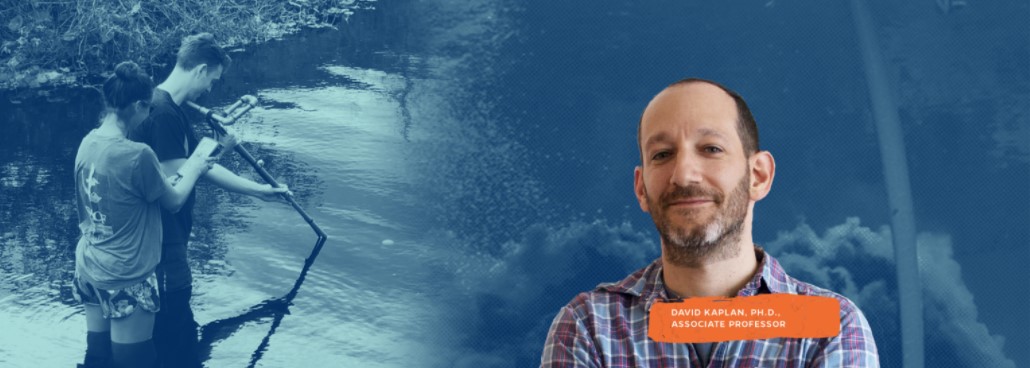Text reproduced from original article produced by UF ESSIE.
University of Florida Center for Coastal Solutions (CCS) Associate Director David Kaplan, Ph.D., and a team of CCS-affiliated scientists and engineers from UF, the University of South Florida, North Carolina State University and the Sanibel-Captiva Conservation Foundation have received $2.3 million from the U.S. Army Corps of Engineers to study how water and nutrients flowing from Lake Okeechobee and the Caloosahatchee River watershed interact with tides, currents, and waves at the coast to affect coastal water quality.
Severe freshwater and marine harmful algal blooms (HABs) in Florida’s lakes, rivers and estuaries have resulted in tremendous environmental and economic damages in recent years. In southwest Florida, blooms are becoming more frequent, more damaging, and longer lasting, threatening the health and well-being of coastal communities. The goal of this project is to develop data- and model-supported guidance for water management to prevent or reduce the impact of harmful algal blooms across the region, which responds to an increasing call for more scientifically supported water- and nutrient-management strategies, particularly for Lake Okeechobee.
“It’s really only by bringing together such a disciplinarily diverse, collaborative, and creative group of scientists and engineers,” said Dr. Kaplan, an associate professor in the UF Engineering School of Sustainable Infrastructure and Environment (ESSIE). “Notably, this is the first time that models of lake, watershed, and estuary hydrology and hydrodynamics will be coupled together to understand harmful algal bloom formation, persistence, and decline.” The model will span from Lake Okeechobee to the Caloosahatchee River estuary and will be used to understand whether Lake Okeechobee discharges can be planned for less ecologically vulnerable time periods or to “flush out” harmful algal species from the river and estuary.
The study is a multipronged approach by UF researchers and their collaborators on a phenomenon that has plagued coastal ecosystems, particularly in southwest Florida, with greater frequency.
A study conducted by UF and published in 2020, showed that, over a 16-year period, there were 28 times when a Florida county experienced a month with 15 or more days of red tide presence. All of them occurred in one of six counties — Pinellas, Manatee, Sarasota, Charlotte, Lee or Collier — which comprises 200 miles of coastline in southwest Florida.
“The ability to predict the movement of water, nutrients, and HABs in these ecosystems—and track their sources from the lake and watershed—is extremely powerful,” said CCS Associate Director and ESSIE Associate Professor Maitane Olabarrieta, Ph.D., whose hydrodynamic simulations are the foundation of the coupled modeling system. Equally critical are models of Lake Okeechobee flows and nutrient loads developed by Mauricio Arias, Ph.D., assistant professor in the Department of Civil & Environmental Engineering at the University of South Florida.
On a parallel track, UF project team members Elise Morrison, Ph.D., an assistant professor in ESSIE, and Ed Phlips, Ph.D., a professor in the School of Forest, Fisheries and Geomatic Sciences in the Institute of Food and Agricultural Sciences (IFAS), are developing novel water quality sampling methods to identify the specific nutrient sources fueling HABs, their origin, and their impact on phytoplankton (algae) communities. These findings will be incorporated into model simulations to help identify the drivers of HABs and set targets for needed water quality improvements.
Eric Milbrandt, Ph.D., Marine Laboratory Director for the Sanibel-Captiva Conservation Foundation, will develop methods for earlier HAB detection through continuous water quality monitoring stations and a comprehensive, targeted sampling program — critical tools in a region where water quality monitoring has largely occurred as a reaction to bloom events. He stressed the importance of a concentrated scientific focus on this ecosystem. “We live and work on a barrier island with limited local expertise, so this project is exciting because of the depth and breadth of new tools and knowledge that will be brought to the region to help tackle water quality declines,” he said. “HABs are causing many negative effects, from fish kills, to large hypoxic [low-oxygen] zones, to blue-green algae blooms that clog up our waterways, all of which negatively affect our tourism-based economy.”
Natalie Nelson, Ph.D., an assistant professor in the Biological and Agricultural Engineering Department at North Carolina State University, hopes the project will inform resource managers like the U.S. Army Corps of Engineers on how their decisions regarding inland water resources affect coastal communities, giving them strategies that to help reduce coastal impacts.
“The team is excited both about the novel scientific discoveries the project will enable, as well as the resulting research applications. We have an exciting opportunity,” Dr. Nelson added.
The project team is beginning field data collection and model integration and planning a kickoff workshop with important stakeholders. Support from the Army Corps of Engineers extends through September 2024.
